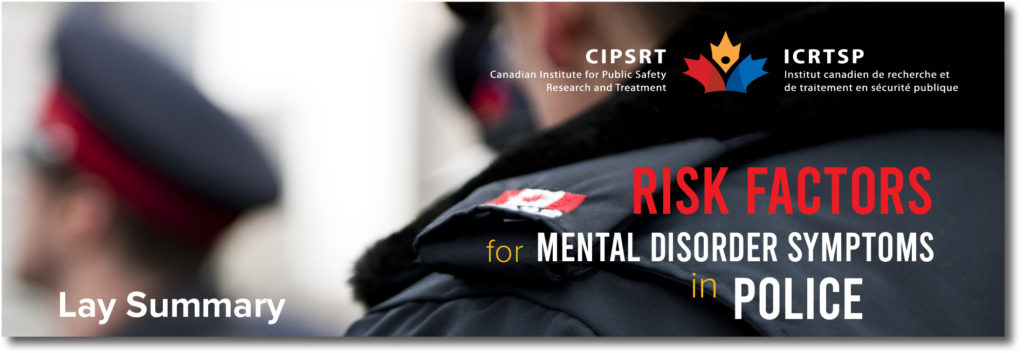Research Summaries

Why was the study done?
Police, like all public safety personnel (PSP), are exposed to stressful and potentially psychologically traumatic events as part of their jobs, which can lead PSP to suffer mental health disorders. Demographic risk factors like sex, marital status, education level, and years on the job, and cognitive risk factors like Anxiety Sensitivity (AS; fear of anxiety symptoms) and Intolerance of Uncertainty (IU; worry about uncertain future events), may be related to the development of mental disorder symptoms. Understanding the relationships between these potential risk factors helps to support the development of new protocols and training to support police mental health.
What was done in the study?
PSP were recruited through their employers, organizations, or public announcements to participate in an online survey assessing mental health symptoms; specifically, symptoms of Posttraumatic Stress Disorder (PTSD), Major Depressive Disorder (MDD), Generalized Anxiety Disorder (GAD), Panic Disorder (PD), and Social Anxiety Disorder (SAD), as well as reporting their levels of AS and IU. Participants also completed demographic questions. The current results focus on responses from participants who self-identified as police officers. Data for the current study results were provided by 979 police officers (708 males, 271 females).
What was found?
• There were no statistically significant relationships between education, marital status, years of service, and mental health symptoms, or with AS and IU.
• A person’s sex had a significant effect on all measures (excluding SAD and AS); indicating females experienced more mental disorder symptoms.
• After controlling for sex, AS and IU measures showed a higher correlation with mental disorder symptoms than sex alone (i.e. the higher the AS and IU scores the more likely a person will have mental disorder symptoms).The result indicates AS and IU may be more influential in the development of mental health disorders than demographic risk factors.
Where do we go from here?
The study results are based on a snapshot of participants. Going forward, data should be collected from a larger group of participants over a longer period. The current results do indicate two trends: 1) female police are more likely to experience mental health issues; 2) cognitive risk factors appear important to the development of mental health disorders. The trends suggest further research directions for developing proactive approaches to mental health because AS and IU can be changed with training. Proactive, evidence-based training might be a key to limiting mental health issues in the police.
The original wording of the study was changed and condensed for the current lay summary.
Original Study
Korol, S., Vig, K., Teale Sapach, M.J.N., Asmundson, G.J.G., & Carleton, R.N. (2019). Demographic and cognitive risk factors for police mental disorder symptoms. The Police Journal: Theory, Practice and Principles, 1-18. doi:10.1177/0032258X19894619
Lay Summary prepared by Kossick, E., Reviewed and Edited by Carleton, R.N. & Martin, R .